Related Research Articles
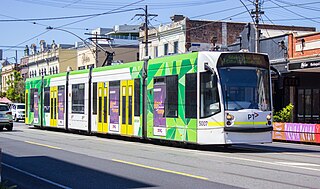
Melbourne tram route 6 is operated by Yarra Trams on the Melbourne tram network from Moreland to Glen Iris. The 19.2 kilometre route is operated out of Brunswick and Malvern depots with Z, B and D class trams.
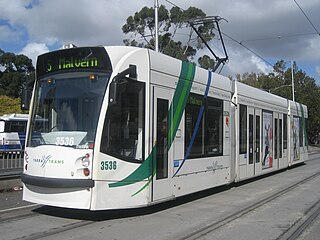
Melbourne tram route 5 is operated by Yarra Trams on the Melbourne tram network from Melbourne University to Malvern. The 12.6 kilometre route is operated out of Malvern depot with Z and D1 class trams.
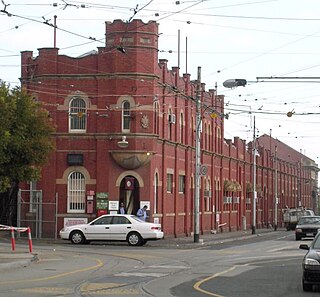
Malvern tram depot is located in Coldblo Road, Armadale, Victoria, a suburb of Stonnington, Australia. Operated by Yarra Trams, it is one of eight tram depots on the Melbourne tram network.

The Ballarat Tramway Museum is an operating tramway museum, located in Ballarat, Victoria, Australia. The museum is run by volunteers and has a fleet of trams which operate on part of the original horse tramway around Lake Wendouree and the Botanical Gardens. It has a large research collection, archive of information and more than 3,500 items about the Ballarat tramways. The trams in Ballarat operated on a large network through the city from 1887 until 1971.
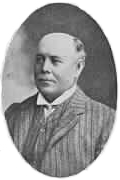
Alexander Cameron was a lawyer, local councillor, and tramways administrator. Following university education he established a legal practice, and later ran for, and won, election on Town of Malvern council. In this position he advocated for the establishment of a local tramway system, and became the inaugural chairman of the Prahran & Malvern Tramways Trust. In 1919 he was appointed as the inaugural chairman of the newly established Melbourne & Metropolitan Tramways Board and presided in that capacity until 1935, creating a unified tram network from the disparate systems that were hitherto operating in Melbourne. He was recognised as a transport expert from his years of experience managing and expanding tramways of Melbourne.
The A-class was a class of 20 trams built by Duncan & Fraser, Adelaide for the Prahran & Malvern Tramways Trust (PMTT). All passed to the Melbourne & Metropolitan Tramways Board on 2 February 1920 when it took over the PMTT becoming the A-class retaining their running numbers.

The C-class was a group of 11 trams built by Duncan & Fraser, Adelaide for the Prahran & Malvern Tramways Trust (P&MTT) in 1913, numbered 25 to 35. All retained their fleet numbers when passed to the Melbourne & Metropolitan Tramways Board (M&MTB) on 2 February 1920, after it took over the P&MTT. They were designated C-class sometime after October 1921, and by late 1923, all M&MTB drop-end-and-centre Maximum Traction trams were grouped together as C-class trams. The 22E Maximum Traction trucks were of JG Brill design, although manufactured by Brush in England.
Prahran & Malvern Tramways Trust (P&MTT) tram No.36 was one of a batch of ten Maximum Traction bogie cars built in 1914 by Duncan & Fraser, Adelaide. Although the lowest numbered of this group, it was the last to enter service, and was the first P&MTT tram to be equipped with 2 x 65 hp GE 201G motors. Subsequently, all other P&MTT Maximum Traction bogie cars were later retro-fitted with the same type of motors. The 22E Maximum Traction trucks were of JG Brill design, although manufactured by Brush in England.

The E-class was a group of 10 trams built by Duncan & Fraser, Adelaide, for the Prahran & Malvern Tramways Trust (P&MTT) in 1914, numbered 36 to 45. Number 36 was converted to a different form by the P&MTT circa 1916, and was later designated D-class. All retained their fleet numbers when passed to the Melbourne & Metropolitan Tramways Board (M&MTB) after it took over the P&MTT on 2 February 1920, and they were designated E-class sometime after October 1921. By late 1923, together with other all M&MTB drop-end-and-centre Maximum Traction trams, they were re-classed as C-class trams. The 22E Maximum Traction trucks were of JG Brill design, although manufactured by Brush in England.
The F-class was a class of two trams built by Duncan & Fraser, Adelaide for the Prahran & Malvern Tramways Trust (PMTT). Both passed to the Melbourne & Metropolitan Tramways Board on 2 February 1920 when it took over the PMTT becoming the F-class retaining their running numbers. They were built as summer cars with five doors on each side, being rebuilt in 1923 with some of the doors filled in and longitudinal seating.
The G-class was a class of six trams built by Duncan & Fraser, Adelaide for the Prahran & Malvern Tramways Trust (PMTT). All passed to the Melbourne & Metropolitan Tramways Board on 2 February 1920 when it took over the PMTT becoming the G-class retaining their running numbers. They were similar to the F-class but had arched instead of clerestory roofs.

The H-class was a class of ten trams built by Duncan & Fraser, Adelaide for the Prahran & Malvern Tramways Trust (PMTT). All passed to the Melbourne & Metropolitan Tramways Board on 2 February 1920 when it took over the PMTT becoming the H-class retaining their running numbers. In 1931, number 63 was sold for further use on the Ballarat network and placed in service as number 18.
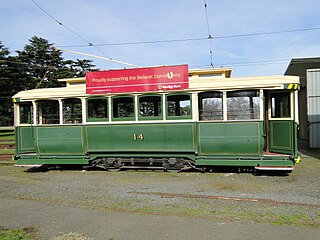
The J-class was a class of twenty trams built by the Meadowbank Manufacturing Company, Sydney for the Prahran & Malvern Tramways Trust (PMTT). All passed to the Melbourne & Metropolitan Tramways Board on 2 February 1920 when it took over the PMTT becoming the J-class retaining their running numbers.
The K-class was a class of nine trams built by James Moore & Sons for the Prahran & Malvern Tramways Trust (PMTT). All passed to the Melbourne & Metropolitan Tramways Board on 2 February 1920 when it took over the PMTT becoming the K-class retaining their running numbers.
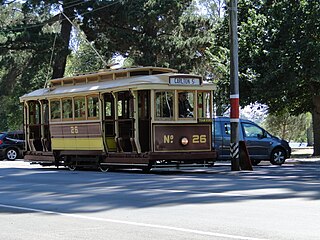
The M-class was a class of 17 trams built by Duncan & Fraser, Adelaide for the Hawthorn Tramways Trust (HTT) as numbers 1 to 10, and 33 to 39. All passed to the Melbourne & Metropolitan Tramways Board on 2 February 1920 when it took over the Municipal Tramway Trusts, becoming the M-class and being renumbered 107 to 116, and 183 to 189.
The N-class was a class of 10 trams built by Duncan & Fraser, Adelaide for the Hawthorn Tramways Trust (HTT) as numbers 11 to 20, all passed to the Melbourne & Metropolitan Tramways Board (M&MTB) on 2 February 1920 when it took over the HTT, becoming the N-class and being renumbered 117 to 126.
The O-class Melbourne tram were a group of four trams built in 1912 by Duncan & Fraser (Adelaide) for the Prahran & Malvern Tramways Trust (P&MTT) upon the recommendation of W. G. T. Goodman, Chief Engineer and General manager of the Adelaide tramways. They were allocated P&MTT fleet numbers 21 to 24. At the time of their introduction, they were by far the largest street-vehicles in Melbourne, and earned the nicknames Zeppelins and Dreadnoughts. Proving to be less than satisfactory in service, they were later sold to the Hawthorn Tramways Trust (HTT) in August 1916 as "surplus to requirements", however P&MTT soon ordered replacement tramcars. Coincidentally they retained their fleet numbers whilst at Hawthorn.

The P-class was a class of eight trams built by Duncan & Fraser, Adelaide for the Hawthorn Tramway Trust (HTT) as numbers 25 to 32. All passed to the Melbourne & Metropolitan Tramways Board on 2 February 1920 when it took over the HTT becoming the P-class and being renumbered 131 to 138.
The Adelaide D type tram was a class of trams operated by the Municipal Tramways Trust on the Adelaide tram network from 1910 until 1958.
The Melbourne tram network began in 1884 with the construction of the Fairfield Horse Tramway. However, the purpose of the line was to increase land prices in the area, and it soon closed during the depression in 1890. The first genuine attempt to construct a tramway network was the construction of the Richmond cable tram line by the Melbourne Tramway & Omnibus Company in 1885. Over the next few years, 16 more cable tram lines were constructed, as well as numerous other horse tramways. The depression of the early 1890s slowed further expansion of the cable network. The first electric tram line was the Box Hill and Doncaster tramway which opened in 1889. This was a pioneering line in what was then the countryside and thus didn't receive much patronage. It closed in 1896. The next attempt at an electric tramway was Victorian Railways' St Kilda to Brighton line, which opened in 1906. Later that year, the North Melbourne Electric Tramway & Lighting Company opened lines to Essendon and Maribyrnong. Many local councils formed their own tramway trusts and built tramways within their own constituency. The most successful of these was the Prahran & Malvern Tramways Trust.
References
- 1 2 Cross, Norman; Budd, Dale; Wilson, Randall (1993). Destination City Melbourne's Electric Trams (5 ed.). Sydney: Transit Publishing Australia. p. 50. ISBN 0 909459 18 5.
- ↑ PMTT tramcar fleet Melbourne Tram Museum
- ↑ B Class Vicsig